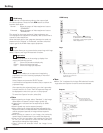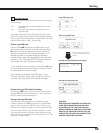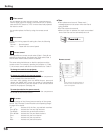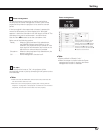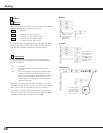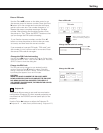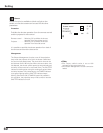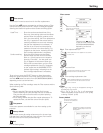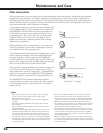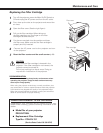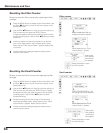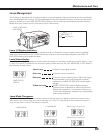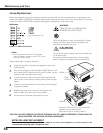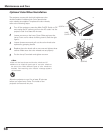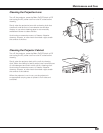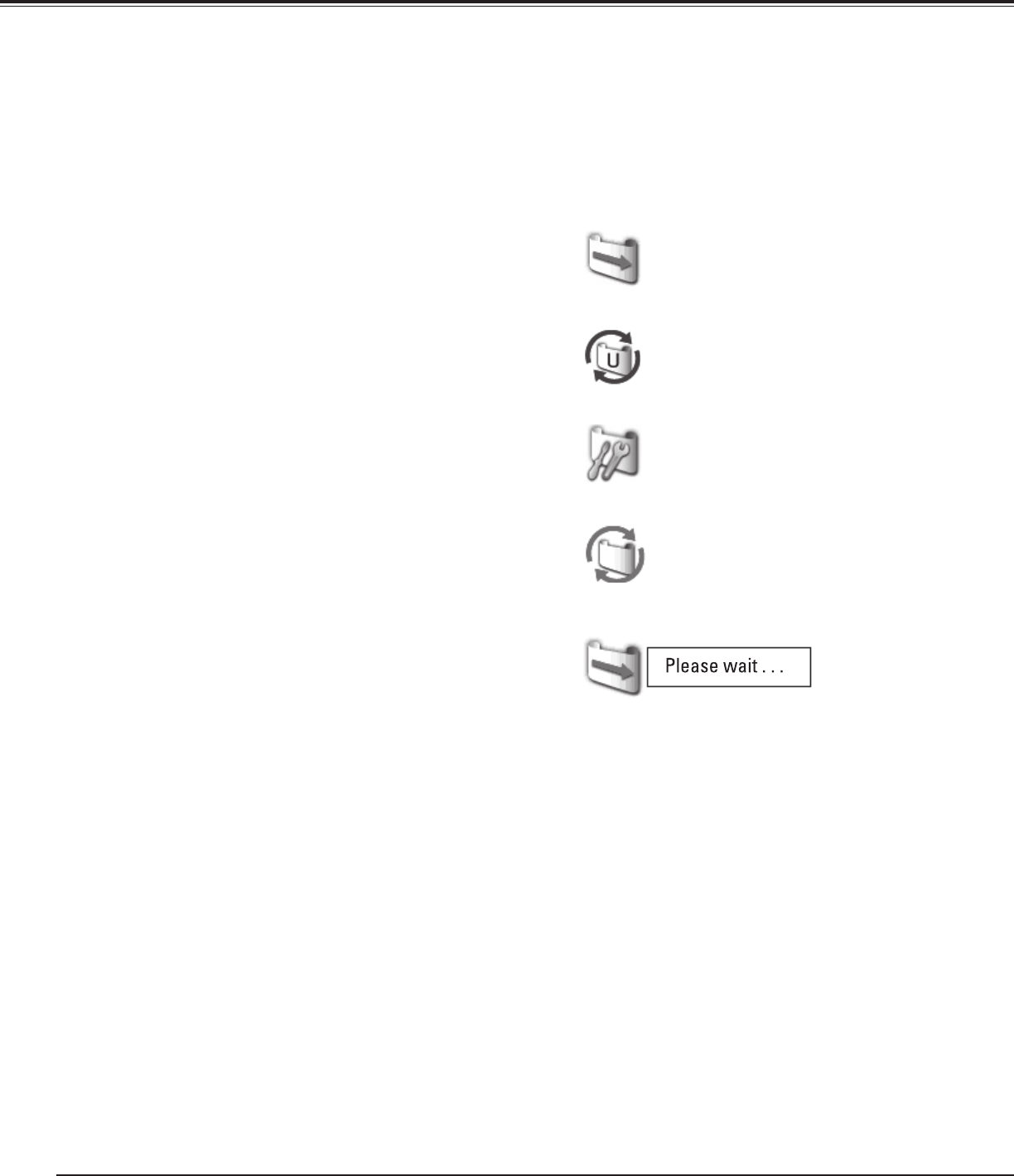
62
Maintenance and Care
Filter Instructions
Filter prevents dust from accumulating on the optical elements inside the projector. Should the filter becomes
clogged with dust particles, it will reduce cooling fans’ effectiveness and may result in internal heat buildup
and adversely affect the life of the projector. This projector has an electrically operated filter which helps you to
replace the filter easily. The projector monitors the condition of the filter at all time and replaces a filter with a
new one automatically when it detects the clogging.
If the projector reaches a time set in the timer setting (p.61),
a Filter replacement icon (Fig.1) appears on the screen and
the WARNING FILTER indicator on the top panel lights up
(p.79). When you see this icon, replace the filter as soon
as possible (pp.31, 56). If the filter is out of scroll and the
projector reaches a time set in the timer setting, Fig. 2
appears on the screen, indicating that the filter cartridge
replacement is necessary.
When the filter scroll is counted down to 1, the Last scroll
icon (Fig.3) appears on the screen, indicating that there is
one scroll left in the filter cartridge (p.61).
If the projector detects that the filter is clogged and no scroll
is left in the filter cartridge, a Filter cartridge replacement
icon (Fig. 4) appears on the screen and the WARNING
FILTER indicator on the top panel lights up (p.79). When you
see this icon, replace the filter cartridge (p.63) and reset the
Filter counter (p.64) and the Scroll counter (p.64).
When the filter is being scrolled by the remote control (p.31)
or the Filter control function in the setting menu (p.56), a
Filter replacement icon and “Please wait...” message (Fig.5)
appear on the screen and the WARNING FILTER indicator
blinks slow (approx. 2 seconds ON, 2 seconds OFF) (p.77).
The WARNING FILTER indicator blinks fast when the
projector detects an abnormal condition, the filter cartridge
is not installed properly, or the filter scroll is not working
properly (p.79).
Fig.1 Filter replacement icon
Fig.4 Filter cartridge replacement icon
Fig.3 Last scroll icon
✔Note:
• Fig.1, Fig.2, Fig.3 or Fig. 4 will not appear when the Display
function is set to “Off” (p.49), or during “Freeze” (p.30).
• The filter cannot be rewound.
• The filter can be scrolled 9 times since the filter cartridge has
10 scrolls.
• The filter cartridge is disposable. Do not clean and reuse the
filter cartridge.
• Do not expose the filter cartridge to water or liquid, or it may
cause a breakdown.
• Replace the filter cartridge after all the scroll is used up. If you
replace the filter cartridge when there are some scrolls left in
the filter cartridge, the filter counter and the scroll counter do
not recognize the correct number of remaining scrolls and the
reset function cannot work properly. It may cause a breakdown.
• The used part of the filter can be seen on the edge of the Filter
cartridge after scrolling the filter, but there is no problem for the
use of the projector.
Fig.5 Filter replacement icon and
“Please wait...” message.
• Do not use the filter cartridge with other projector. The filter
counter and the scroll counter do not recognize the correct
number of remaining scrolls of the used filter cartridge and the
reset function cannot work properly. It may cause a breakdown.
• Make sure that the projection lamps are turned off when you
are replacing the filter cartridge. If you replace the filter cartridge
when the projection lamps are turned on, the projector will be
shut down automatically for safety purposes.
• Do not forget to reset the filter counter and the scroll counter in
the setting menu after replacing the filter cartridge. If you forget
to reset the filter counter and the scroll counter, the projector
cannot recognize the correct number of remaining scrolls and it
may cause a breakdown.
• When the projector is kept used for 3 minutes without getting
the filter cartridge replaced after the Fig.4 appears on the screen,
the projector is turned off automatically to prevent the damage of
optical components.
Fig.2



